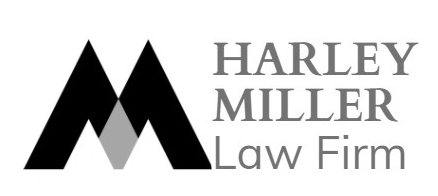Question:
According to the instructions on the back of Form No. 15/BCQT/GSQL of Circular No. 38/2015/TT-BTC, businesses are required to consolidate data on “imported raw materials and supplies” from account 152 for inclusion in the Financial Statement (included in Form 15). However, these instructions do not mention the consolidation of data on “imported raw materials and supplies” from account 154 (Cost of unfinished goods held for sale). In practice, two cases may occur as follows:
• Case 1: At the end of the financial year (December 31), there are only imported raw materials and supplies in stock and no imported raw materials and supplies in unfinished goods: The consolidated financial statement data according to the instructions is appropriate.
• Case 2: At the end of the financial year (December 31), in addition to imported raw materials and supplies in stock, there are imported raw materials and supplies in unfinished goods: The consolidated financial statement data according to the instructions is NOT appropriate. This is because the closing balance of raw materials and supplies (column 7 of Form 15) only includes the raw materials and supplies in stock (corresponding to the closing balance in account 152), excluding the raw materials and supplies in unfinished goods (corresponding to the closing balance in account 154).
Therefore, the business requests the Customs agency to reconsider this case and provide appropriate guidance based on reality for accurate implementation.
Answer:
Regarding the mentioned difficulties of the business, the General Department of Customs has issued Official Letters No. 597/TCHQ-GSQL dated January 21, 2016, and 1501/TCHQ-GSQL dated February 29, 2016, providing additional instructions for the reporting of raw materials in the financial settlement and implementation of Decision No. 1966/QD-TCHQ:
“2.1) For processing activities:
It is suggested to instruct businesses to maintain separate records for raw materials, supplies, and similar finished products as regulated in Circular No. 200/2014/TT-BTC and Decision No. 48/2006/QD-BTC. In cases where businesses track processing activities based on value, the reporting of financial statements should follow the guidance in Point 2.2 below.
If the internal control system of the enterprise tracks detailed information based on quantity of goods rather than value, the data can be reported based on quantity. The form used for financial statements is Form No. 15/BCQT-NVL/GSQL, where the monetary amount is replaced by quantity and categorized by type of raw materials. 2.2) For manufacturing and business activities: The data reflected in the financial statements are based on the accounting system in accordance with the corresponding accounts 152, 155, which follow the principles of inventory valuation for raw materials, supplies, and finished goods during the reporting period. Other relevant accounts (such as 151, 154, 621, 631, 632, etc.) should be presented and explained when requested by the customs authority during inspections at the business premises.
The data on Form No. 15/BCQT-NVL/GSQL is implemented as follows: a) For imported raw materials: The data on imported raw materials and supplies for production of export goods during the period include: • The beginning inventory value (column 4) is the total inventory value at the end of the previous fiscal year carried forward to the current fiscal year-end. • The value of imports during the period (column 5) is the total value of raw materials imported during the period, including imports from abroad, imports from non-duty-free zones, imports on the spot, imports transferred from other outsourcing contracts, imports from domestic sources (applicable to domestic non-clearance exports), drawn from account 152. • The value of exports during the period (column 6) is the total value of raw materials exported, including production, outsourced processing, domestic sales after change of use purpose, returns of raw materials and supplies, drawn from account 152. • The value of raw materials reflects the original cost, including the purchase price stated on the invoice (customs declaration form), import duties, special consumption taxes, VAT on imported goods, environmental protection taxes (if applicable), transportation costs, handling charges, storage charges, classification fees, insurance costs, procurement officer’s fees, independent procurement department’s expenses, and natural losses (if applicable) within the standard norms. If VAT on imported goods is deductible, the value of purchased raw materials is reflected at the purchase price exclusive of VAT. If VAT on imported goods is non-deductible, the value of purchased raw materials includes VAT. b) For finished goods produced from imported raw materials: The data on finished goods produced for export include: • The beginning inventory value (column 4) is the total inventory value at the end of the previous fiscal year carried forward to the current fiscal year-end. • The value of imports during the period (column 5) is the total value of finished goods produced from imported raw materials during the period (including finished goods received after outsourcing) drawn from account 155. • The value of exports during the period (column 6) is the total value of finished goods exported, including exports to foreign countries, exports to non-duty-free zones, on-spot exports, transfers to other outsourcing contracts, domestic sales after change of use purpose, drawn from account 155.
Note:
Provincial Customs Departments need to guide businesses to integrate data from three departments: (1) inventory management, (2) accounting, and (3) import-export into a unified financial statement that is consistent with the accounting system and documents being monitored in the enterprise, to avoid discrepancies and inaccuracies among these three departments and prevent the need for explanations during inspections. When preparing financial statements, businesses are not required to convert sales of finished products (from account 154 or similar accounts) into raw materials for reporting in the financial statements.





